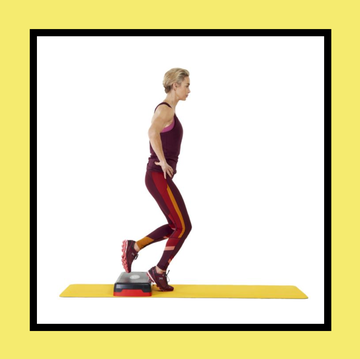Green, pink, purple.
The best yoga mats for post-run recovery and home workouts
Stay put in even the most precarious of poses with these plush, grippy mats
Want more tried and tested recommendations from the RW editors? Sign up to our new weekly newsletter Kit Bag, coming soon. Click here to subscribe.
Whether you’re a At 2mm dont expect much in the way of cushioning, or a runner looking to invest in a yoga mat for soothing post-run stretches or home workouts, we’ve got you covered.
Need a little extra incentive to get you started? Regular yoga practice can boost both your mental and physical health by improving mobility, building muscular strength and helping you to de-stress. It can also help to fend off injuries, keeping you running for longer.
The best yoga mats for runners
There’s no point splashing your cash on a slippery mat that offers no support. To help you out, the Runner’s World Lab experts tested over 40 of the best yoga mats on the market to find those that strike the perfect balance between grip and comfort. These were the top performers:
Is there a difference between an exercise mat and a yoga mat?
There’s an almost overwhelming number of training mats available on the market right now, and most can be split into two categories: yoga mats and exercise mats.
An exercise mat will be slightly thicker and more durable, able to take the strain of dropped dumbbells and rugged footwear as users blitz through HIIT and weights sessions.
Yoga mats, meanwhile, tend to be made with slightly more delicate materials such as rubber or latex, providing a stickier surface for your hands and feet. Unless the manufacturer says otherwise, it's best to avoid wearing shoes on these mats and work out bare foot to prevent damage.
How to choose a yoga mat
Jazzy patterns catch the eye, but put them aside and you’re left with four simple criteria.
Grip: This applies to both the top and underside of the mat. It’s impossible to enjoy a relaxing yoga session when you can’t do a downward dog without slipping. So, consider mats made from sticky materials, such as rubber, or those with a non-slip coating. Your mat should lie flat on any surface, from carpet to tiles, and provide the most stable base possible.
Support: Look for a mat that’s thick enough to protect your spine from hard floors but not so cushioned that your limbs will sink into it, throwing you off balance.
Durability: Your yoga mat won’t have to withstand intense HIIT workouts or dropped dumbbells, but it should emerge unscathed from dynamic practice, without any rips or dents.
Portability: An option with great get-up-and-go credentials makes an ideal yoga companion if you’re a fan of alfresco sessions. Look for thinner mats that roll up easily and have a carry strap if you prefer Pilates in the park.
On our quest to find the best on the market, we also considered sustainability, style and any original features On the pricier side.
How we test the best yoga mats

Yanar has spent 15 years as a health and wellness editor and writer for national titles such as Women’s Health, Men’s Health and Runner’s World. Yanar is a 580-hour yoga therapist, 200-hour yoga teacher and level 3 personal trainer at Yanar Mind & Movement. After years of running races and marathons, she discovered CrossFit and Olympic lifting in her mid-30s and fell in love with training and competing. She now advocates strength training for women to build a stronger body for life and the benefits of nervous system regulation for better physical and mental health. When not training, teaching or writing, she can be found experimenting in the kitchen.

The best rowing machines to up your cardio indoors

Looking for weights? Quick, weve found some

Superior grip, even in high-sweat situations

6 Natural rubber and polyurethane
























